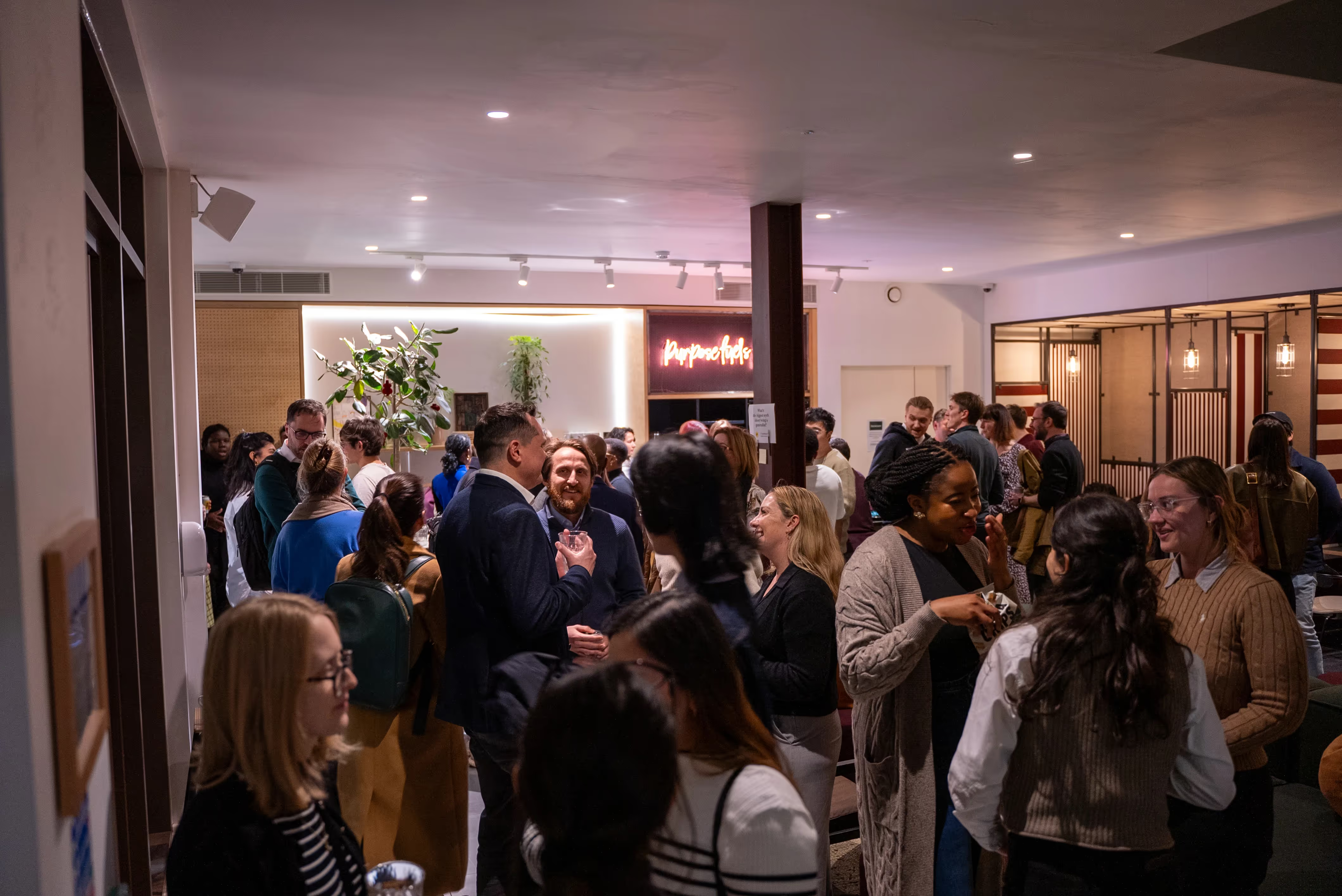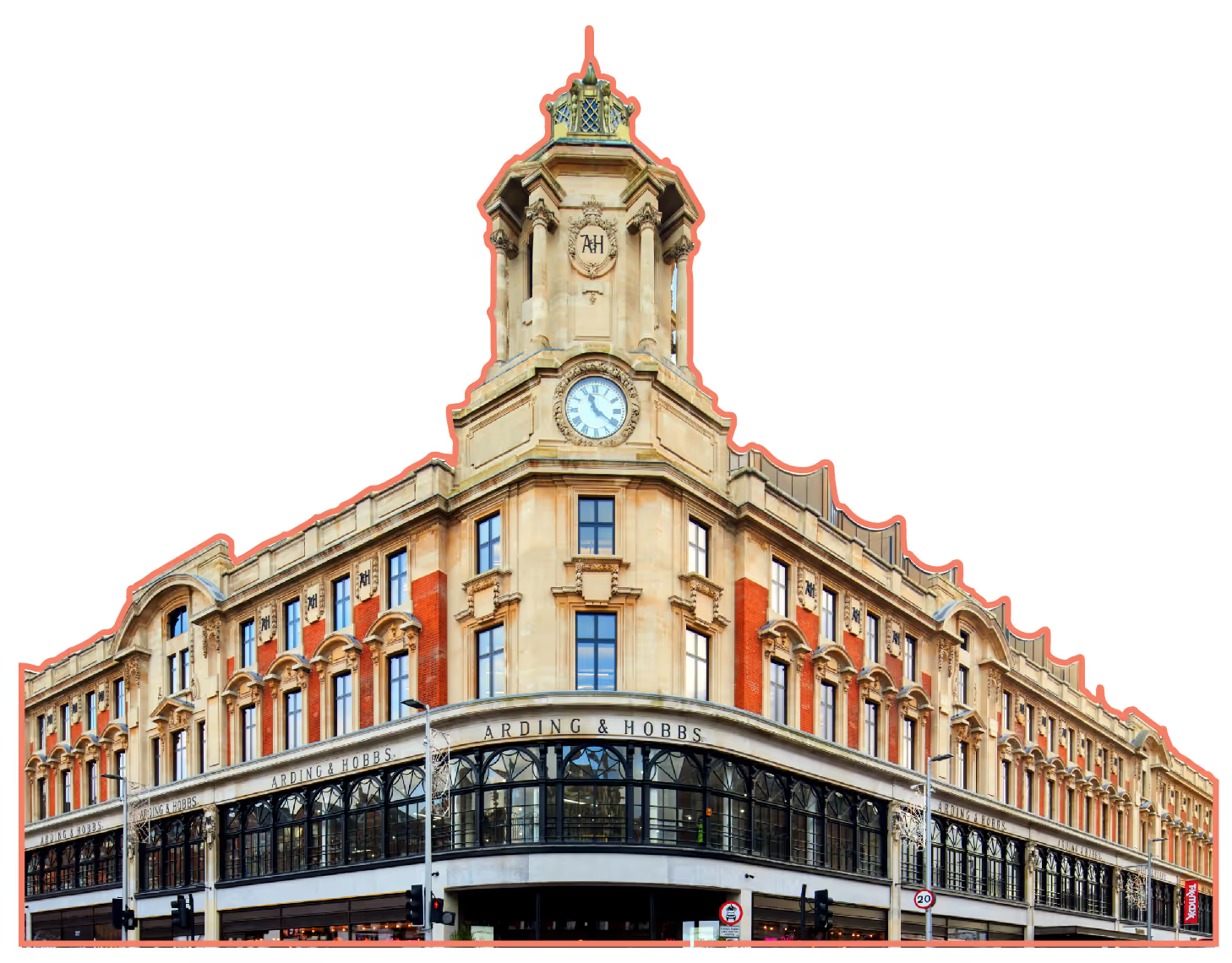Start With Why by Simon Sinek helps leaders to artfully explain their purpose, successfully communicating the passion behind the 'Why' as a way to engage with the listener's limbic brain. Simon Sinek started a movement to help people become more inspired at work, and in turn inspire their colleagues and customers. Sinek calls this powerful idea The Golden Circle, and it provides a framework upon which organisations can be built, movements can be led, and people can be inspired.
Start With Why by Simon Sinek helps leaders to artfully explain their purpose, successfully communicating the passion behind the 'Why' as a way to engage with the listener's limbic brain. Simon Sinek started a movement to help people become more inspired at work, and in turn inspire their colleagues and customers. Sinek calls this powerful idea The Golden Circle, and it provides a framework upon which organisations can be built, movements can be led, and people can be inspired.
{{divider}}
At the inception of our East London co-working space, x+why made the decision to build its value proposition around The Golden Circle - starting with asking ourselves, ‘why?’ Authentic motivation is built on knowing why you’re doing what you do. This helps to create products that fit by design, not by default, according to a blueprint.
{{divider}}
Knowing your ‘why’ helps you to better balance opportunities and trade-offs when it comes to making important decisions. For example, quick-fix sales tactics such as two for one, clearance sales, or appeals to authority are great for short term revenue, but in the long-term, they leave less room for re-investment into what matters.
{{divider}}
Setting prices as low as possible, at the cost of other things, contributes to the race to the bottom seen across many industries. The lower your prices, the more reluctant your customers are to pay more, which creates a negative feedback loop whereby slimmer margins can only be off-set by more sales. This is not a good way to build sustainable brand loyalty, and discount retailers that still manage to maintain a healthy bottom line in such circumstances often suffer in terms of reputation, due to the need to cut costs elsewhere - for example in the form of underpaid and overworked employees.
{{divider}}
Beliefs and Values
{{divider}}
Companies that last don’t just sell products, they affirm their customers beliefs and values. For example, what sets Apple’s success apart from similar companies such as Dell, HP or Toshiba, is that they aren’t just associated with a single product category. They have pretty much equal access to resources, and at a baseline level, all the products are actually pretty similar - but only Apple has queues going down the street at the launch of their latest release.
{{divider}}
Apple has been successful across a range of different markets, you can shop in one place for all your electronic needs: from computers and phones to music, apps and accessories. Values and beliefs are what contribute to the emergent properties of an organisation - the brand value. This is not something that stands alone in isolation, and neither is it created solely by the parent company, rather it is an on-going relationship between the minds of company and customer alike.
{{divider}}
Most organisations have a fairly straightforward pitch: they explain what they do, and why they’re better than their competitors. Apple don’t just make gadgets that are beautifully designed and user-friendly, they go beyond the physical and material, they’re also about challenging the status quo, and their products are a way to prove this concept - ‘think different’.
{{divider}}
Apple don’t need to rely on price manipulation, they don’t claim to be cheaper than their competitors, they claim to be different - by explaining why they do what they do. This ensures that they see their customers as more than just a set of numbers, and as a diverse array of people with different sets of beliefs and values. They appeal to their desire to think creatively and outside the box.
{{divider}}
Brand Biology
{{divider}}
What is the DNA behind this approach that makes it so successful? The answer comes back to an imperfect science - our beliefs and our biology. Our rational brain doesn’t control our main decisions. Science has shown that we feel our emotions first, and attempt to rationalise them later. There are 3 main areas of the brain: the neocortex, which is the most recently evolved (rational thought and language), and the two middle sections that make up the limbic brain (decision-making, loyalty and trust) which lack the capacity for language.
{{divider}}
Most companies use rational reasoning to appeal to the neocortex. However although people can process vast amounts of information, this isn’t what drives behaviour. This is also why consumer feedback and research is limited in scope - a lot of the time, there are irrational / unknown unmet needs that won’t be revealed as part of the insights. This will include anthropological factors such as how products appeal to our senses and make us feel. Not taking such things into account means that a company will build its foundations on false assumptions.
{{divider}}
Better Before Bigger
{{divider}}
Innovations have the potential to spread far and wide when they’re championed by a small minority of true believers, akin to the butterfly effect. This is actually called the law of diffusion - a concept that reaches back to a 1962 piece of literature by communications theorist Everett M. Rogers. His theory states that every population can be divided into 5 segments, each of which responds differently to innovation: innovators, early adopters, early majority, late majority and laggards.
{{divider}}
Minority Rules
{{divider}}
The innovators are believed to make up roughly 2.5% of the population, they are the first to embrace novelty and usually source potential before others do, as well as being happy to embrace calculated risk. Around 13.5% are early adopters, the early and late majority are slightly more risk averse or have more of a propensity to follow the crowd (68%), while the final 16% are laggards - people that only buy touch-tone phones because rotary phones don’t exist any more.
{{divider}}
Innovators and early adopters are more likely to espouse an idea because it feels right and intuitively aligns with their values. Appealing to this initial subsegment is what’s key to mass market success. Why? Because the purely practical-minded majority won’t buy something until these initial waves have recommended it. If you want to reach the middle of society, you need the support of the minority of loyalists. Something they’ll only get on board with if they believe in your reason why.
{{divider}}
All great movements that challenge the pre-held assumptions under culture, dogma and group-think start by appealing to this sub-segment. Where most businesses fail, is that they lose sight of their founding ideals - a holistic philosophy that encompasses all of employees, customers and the community at large. A common reason for losing this sense of direction is by becoming blinded by purely profit-driven economics, a misdirection that the current ecosystem often facilitates.
{{divider}}
As a company grows bigger, it’s even easier for it to lose its sense of purpose, and on a micro-level it helps to explain why even when many people do well financially, they still don’t feel successful. As success follows success, it becomes easier and easier to focus on what is being done, while increasingly losing sight of why.
{{divider}}
What, Why, Who, Where, When?
{{divider}}
It’s often said that it’s ‘who you know, not what you know’. We’d argue that it’s ‘why you know, not what or who you know’.
{{divider}}
A perfectly illustrative example of this is the inception of flight. One of the first attempted pioneers was a man called Samuel Pierpont Langley, a well-connected senior officer at the Smithsonian Institute with friends in high places including Andrew Carnegie and Alexander Graham Bell. His contacts had helped him land a $50,000 research grant from the US War Department, and the general sentiment was that he couldn’t fail.
{{divider}}
Except that you probably won’t have heard of him, whereas you might have heard of brothers Wilbur and Orville Wright. The flying machine they used had been built by themselves and their team. None of them held a college degree and the project had been funded by proceeds from the Wrights’ bicycle shop. In their biography, these scientists cared deeply and genuinely about the problem they were trying to solve. More importantly, they knew that if it succeeded, they would change the world forever.
{{divider}}
Had the Wright brothers been obsessed with the ‘what’ - mainly the fame and prestige that might come from such a scientific breakthrough, they would have given up instead of finding a bigger purpose in terms of attempting to improve. They also were not lone rangers, and had a dedicated team - a group of people that they had inspired to join them in their mission, despite working through repeated failure after failure. Instead of paying for expert help, their commitment was authentic and they believed in themselves and what they were doing.
{{divider}}
Find Your Why offers something that every person and business is looking for: a true purpose. The authors (Simon Sinek, David Mead and Peter Docker) provide strategies and exercises that individuals and teams alike can use to discover their most powerful motivators, and their reasons for getting up in the morning.


.png)
.avif)


.avif)


.avif)
.avif)




